
Roots
The quiet rustle of a comb through strands, the careful gathering of coils, the patient braiding of lengths—these actions, seemingly simple, have echoed through millennia, shaping not only personal appearance but the very fabric of women’s lives. From the earliest human settlements, hair has served as more than mere adornment; it has been a profound language, speaking volumes about status, spiritual devotion, marital standing, and communal identity. To truly grasp how ancient hair practices sculpted women’s roles, one must journey back to the genesis of these traditions, understanding the foundational principles that elevated hair from a biological feature to a powerful cultural artifact. It is in these ancient roots that we find the subtle yet undeniable influence of hair on societal positioning, daily rituals, and even the unseen pathways of power.
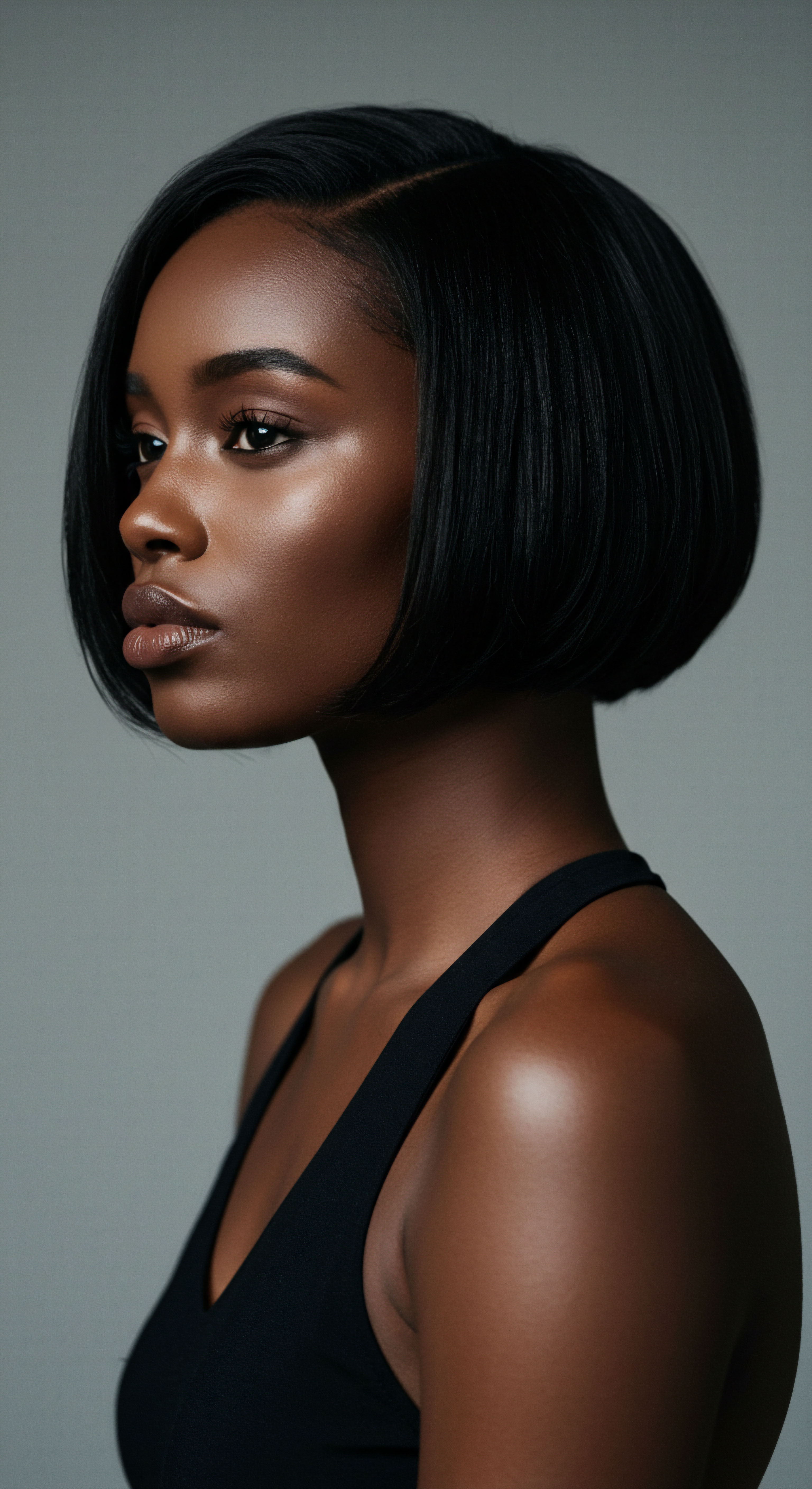
Hair as a Symbol of Status and Social Standing
In many ancient societies, the way a woman styled her hair was an immediate, visual declaration of her place within the social hierarchy. Elaborate coiffures, often requiring hours of skilled labor and rare materials, were exclusive to the elite, signifying leisure and access to resources. Consider the detailed frescoes of Minoan Crete, where women are depicted with cascading curls and intricate updos, suggesting a society that valued artistry and perhaps, a certain public display of refinement. Similarly, in ancient Egypt, the wigs worn by noblewomen were not simply fashion statements; they were complex constructions of human hair, plant fibers, and even wool, meticulously styled and scented.
The quality and complexity of these wigs, along with the presence of attendants to maintain them, underscored the wearer’s elevated status, distinguishing her from the common populace who might wear their hair simply or shaved for hygiene. The ability to maintain such an intricate presentation spoke volumes about one’s household and influence.
Ancient hair practices provided a visual lexicon, silently broadcasting a woman’s place within her community’s intricate social structure.
The distinctions extended beyond wealth. In some cultures, specific hairstyles marked women as married, unmarried, widowed, or of a particular age group. A young woman’s unbound hair might signal her availability for marriage, while a married woman’s hair might be covered, braided, or arranged in a specific knot to signify her new domestic role and commitment. These practices, though varied, universally communicated a woman’s life stage and her expected societal contributions, guiding interactions and defining boundaries.

Did Hair Practices Denote Marital Status in Ancient Societies?
Across diverse ancient civilizations, hair served as a clear indicator of a woman’s marital status, influencing her public perception and interactions. In ancient Rome, for instance, a bride’s hair was typically parted with a spear-shaped comb, the hasta caelibaris, and then braided into six plaits, a style associated with Vestal Virgins, symbolizing purity and dedication to the household. This specific styling marked her transition from maiden to wife, signaling her new domestic responsibilities and her husband’s authority.
Similarly, in some West African cultures, the intricacy of a woman’s braids could signify her marital availability or her recent wedding, with certain patterns reserved exclusively for married women. These visual cues allowed communities to instantly identify a woman’s social standing and respond accordingly, reinforcing societal norms and expectations around marriage and family.
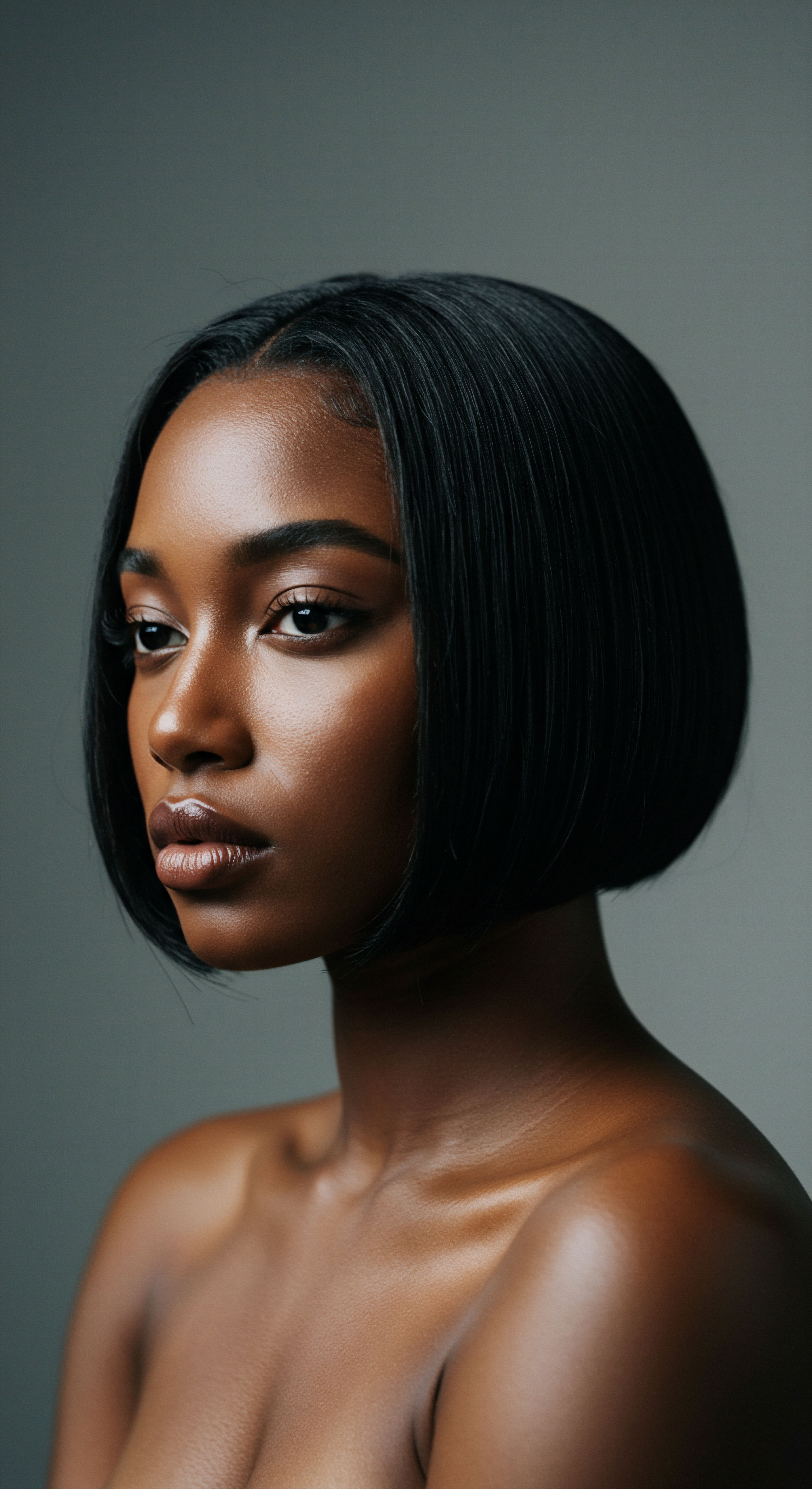
Hair as a Spiritual and Protective Conduit
Beyond social declarations, hair held deep spiritual significance in many ancient belief systems, positioning women as conduits or protectors of sacred energies. In some indigenous cultures, hair was believed to be an extension of the soul, a direct link to ancestral wisdom or divine power. Women, often seen as nurturers and life-givers, frequently assumed roles in rituals where their hair was integral to spiritual practices.
Consider the ceremonial braiding among certain Native American tribes, where specific patterns were believed to hold prayers or offer protection. The length and care of hair could be a sign of devotion, a physical manifestation of one’s connection to the spiritual realm.
Conversely, hair might also be shaved or covered as a sign of mourning, humility, or ritual purification, indicating a woman’s temporary or permanent separation from worldly concerns for spiritual purposes. The Vestal Virgins of Rome, dedicated to the goddess Vesta, wore their hair in a distinct six-braid style upon entering their service, a symbol of their consecrated status and purity. This sacred connection meant that hair practices were not merely aesthetic choices but deeply embedded spiritual disciplines that shaped women’s religious roles and responsibilities within their communities.
- Length ❉ In many ancient societies, long, well-maintained hair was often associated with vitality, fertility, and spiritual strength, particularly for women.
- Braiding ❉ Intricate braiding patterns often carried symbolic meaning, representing community ties, life’s journey, or protection from malevolent forces.
- Covering ❉ Head coverings, common in various ancient cultures, could signify modesty, religious devotion, or a woman’s married status, marking her as sacred or protected.
The relationship between hair and spirituality also extended to its perceived protective qualities. Many cultures believed hair could ward off evil spirits or absorb positive energies. A woman’s hair, therefore, might be styled in ways meant to shield her or her family, or to draw blessings. This perception placed women in a unique position as guardians, with their hair acting as a visible, living charm.

Ritual
As we step beyond the foundational understanding of hair’s symbolic weight, we find ourselves immersed in the rhythmic, purposeful actions that brought these meanings to life ❉ the rituals. Daily and periodic hair practices were not incidental; they were carefully choreographed sequences, deeply embedded in women’s routines, dictating how they interacted with their bodies, their families, and their wider communities. These rituals, whether simple acts of cleansing or elaborate styling sessions, shaped women’s practical roles, defining their time, their skills, and their contributions to the domestic and public spheres. This section delves into the methodical aspects of ancient hair care, illustrating how these deliberate actions refined women’s responsibilities and capacities.

The Daily Discipline of Hair Care
For women in antiquity, hair care was often a time-consuming and labor-intensive endeavor, a daily discipline that significantly structured their lives. Unlike modern convenience, ancient methods required considerable effort. Cleansing hair involved natural ingredients like saponins from plants or specialized clays, often followed by oiling and sun-drying.
The sheer physical act of maintaining long, healthy hair—detangling, conditioning, and drying—demanded patience and consistent effort. This daily investment of time, often performed within the domestic sphere, underscored women’s roles as custodians of personal and familial well-being, where hygiene and appearance were intertwined with social standing.
Beyond basic maintenance, the daily styling of hair, particularly for women of higher status, was a significant undertaking. In ancient Rome, for instance, the ornatrix, a female hairdresser, often an enslaved woman, spent hours arranging her mistress’s hair into elaborate coiffures, using hot irons, curling tongs, and intricate pins. This practice speaks to the availability of leisure for the elite woman, whose daily schedule allowed for such extended beauty routines, while simultaneously highlighting the labor of others. The elite woman’s ability to present herself with such precision reflected her household’s efficiency and her own dedication to societal expectations of feminine presentation.
The daily routines of ancient hair care were not mere vanity; they were structured acts that mirrored women’s roles within the household and society.
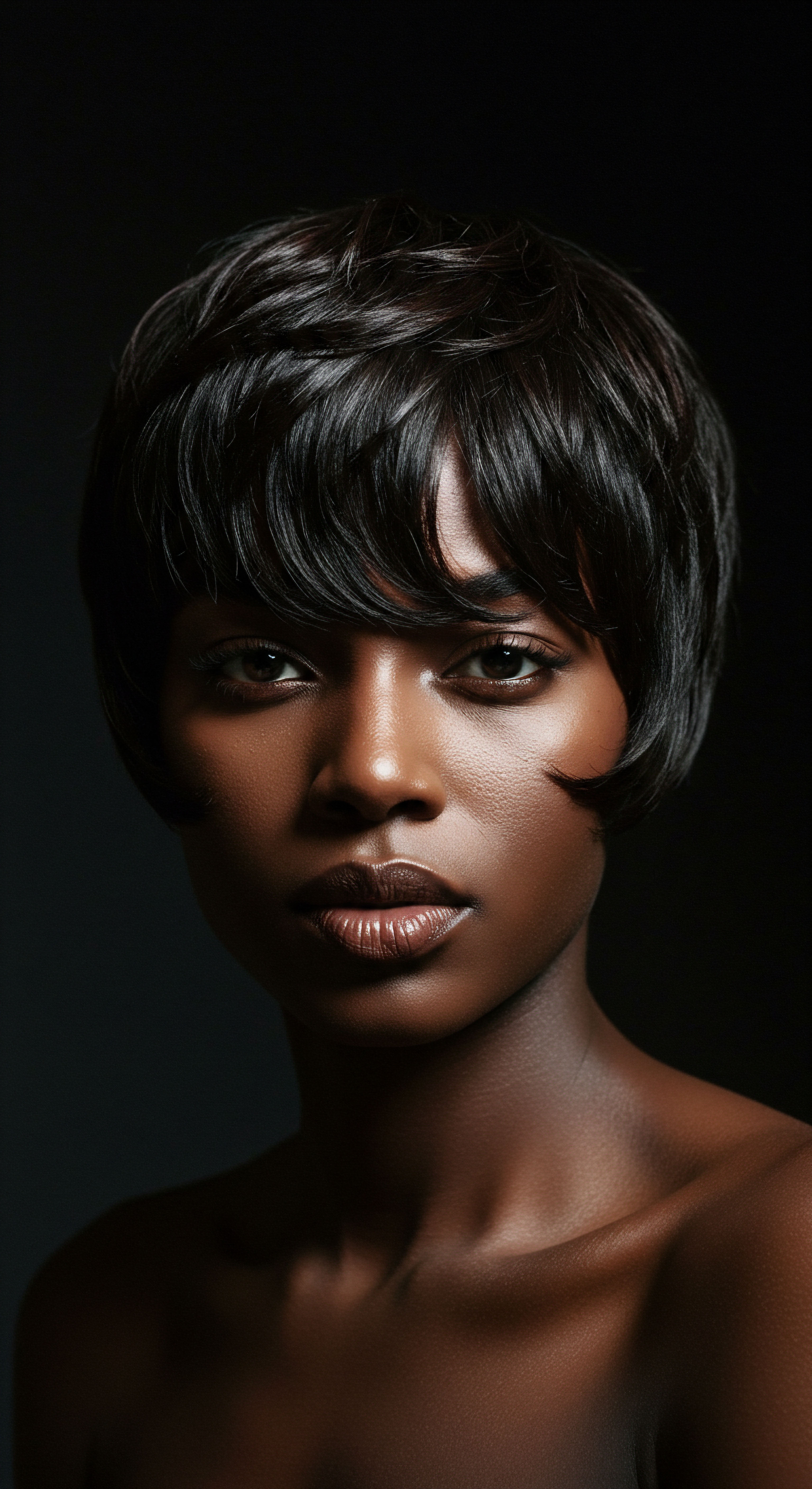
How Did Ancient Hairdressing Impact Women’s Domestic Roles?
Ancient hairdressing profoundly influenced women’s domestic roles by demanding significant time, resources, and often, the labor of others within the household. For elite women, the elaborate styles prevalent in societies like Rome or Egypt necessitated the employment of skilled attendants, known as ornatrices in Rome, who were frequently enslaved. These hairdressers would spend hours preparing, styling, and maintaining their mistress’s hair, using a range of tools from curling irons to intricate pins. This division of labor meant that while the mistress presented a picture of refined beauty, the underlying effort was borne by others, reinforcing class distinctions and the mistress’s role as a manager of household staff.
The time saved by the mistress, though often dedicated to other social obligations, freed her from the physical burden of hair maintenance, solidifying her position as a woman of leisure and influence within her domestic sphere. For women of lesser means, hair care was a personal, time-consuming chore, integrated into their daily tasks of running a household, caring for children, and preparing food. The simplicity of their styles often reflected the practical constraints of their lives, where elaborate coiffures were neither affordable nor practical for women engaged in manual labor.

Hair as a Tool for Social Expression and Group Identity
Hair rituals also served as powerful tools for expressing social identity and group affiliation. The specific styles, adornments, and practices often acted as visual markers, distinguishing one tribe from another, one social class from another, or even one religious sect from another. In many African societies, for example, hair braiding was a communal activity, a time for women to gather, share stories, and reinforce social bonds.
The patterns themselves could signify tribal affiliation, age, or even personal accomplishments. This communal aspect of hair care meant that women’s roles extended beyond individual adornment to include the preservation and transmission of cultural heritage through shared ritual.
These practices fostered a sense of belonging and collective identity. A woman’s participation in these rituals reinforced her connection to her community and her adherence to its customs. Deviating from accepted hair norms could signify rebellion, ostracization, or a deliberate rejection of group identity, highlighting the powerful social pressures associated with hair. Thus, hair rituals were not just about personal presentation; they were about affirming one’s place within the collective, solidifying women’s roles as carriers of cultural tradition and social cohesion.
| Adornment Type Headbands/Fillets |
| Common Materials Fabric, leather, metal, precious stones |
| Societal Meaning for Women Status, purity (ancient Greece), athletic achievement |
| Adornment Type Hairpins/Combs |
| Common Materials Bone, wood, ivory, bronze, gold |
| Societal Meaning for Women Status, wealth, securing elaborate styles, sometimes symbolic motifs |
| Adornment Type Wigs/Hairpieces |
| Common Materials Human hair, plant fibers, wool, resin |
| Societal Meaning for Women Hygiene, status, protection from sun, ceremonial use (ancient Egypt, Rome) |
| Adornment Type Jewelry (beads, pendants) |
| Common Materials Gold, silver, glass, shells, coral |
| Societal Meaning for Women Wealth, marital status, tribal affiliation, spiritual protection |
| Adornment Type These adornments transformed hair into a communicative canvas, conveying intricate details about a woman's life. |

Relay
Having considered the foundational symbols and the practical rituals, we now arrive at the most sophisticated layers of understanding ❉ how ancient hair practices acted as a relay, transmitting complex messages across generations, between social strata, and even influencing political landscapes. This deeper inquiry moves beyond the visible acts to the underlying forces that shaped women’s roles, revealing how hair could be an instrument of control, a declaration of defiance, or a subtle yet potent indicator of power dynamics. We will examine the interconnectedness of hair with economic realities, psychological impacts, and the broader cultural narrative, drawing upon research to unveil these profound connections.

Hair as an Economic Commodity and Labor Indicator
The demand for specific hair types and styles in antiquity created a tangible economic dimension, particularly for women. In societies where elaborate wigs and extensions were fashionable, hair became a valuable commodity, traded and sold. This demand often intersected with existing social hierarchies, leading to situations where the hair of enslaved or lower-class individuals was procured to adorn the elite. For instance, Roman elite women, known for their towering coiffures and elaborate false hairpieces, often relied on the hair of enslaved women from conquered territories or impoverished free individuals.
This practice highlights a stark economic reality ❉ the beauty of the privileged was, in many instances, literally built upon the uncompensated or undercompensated labor and physical contributions of the less fortunate. The renowned Roman historian Tacitus, in his Annals, describes the extravagant lifestyles of the Roman elite, indirectly touching upon the vast resources, including human labor, dedicated to their appearance. This underscores how hair practices were not merely aesthetic but were deeply embedded in the economic exploitation and social stratification of the time. The elaborate styles of the wealthy were a clear visual marker of their ability to command resources and labor, placing them at the apex of the social order while simultaneously reinforcing the subjugation of others.
The seemingly simple act of styling hair in antiquity often concealed a complex economic engine, powered by labor and the trade of human hair.
This economic aspect extended to the specialized labor of hairdressers. The ornatrix in Rome, often an enslaved woman, possessed highly valued skills. Her ability to craft intricate styles, use specialized tools, and maintain the hair of her mistress made her an indispensable part of the elite household.
While her status was low, her expertise was high, creating a unique tension within her role. This dynamic meant that a woman’s role could be defined not only by her own hair but also by her capacity to manage or provide hair services, whether as a mistress commanding labor or as a skilled artisan whose livelihood depended on it.
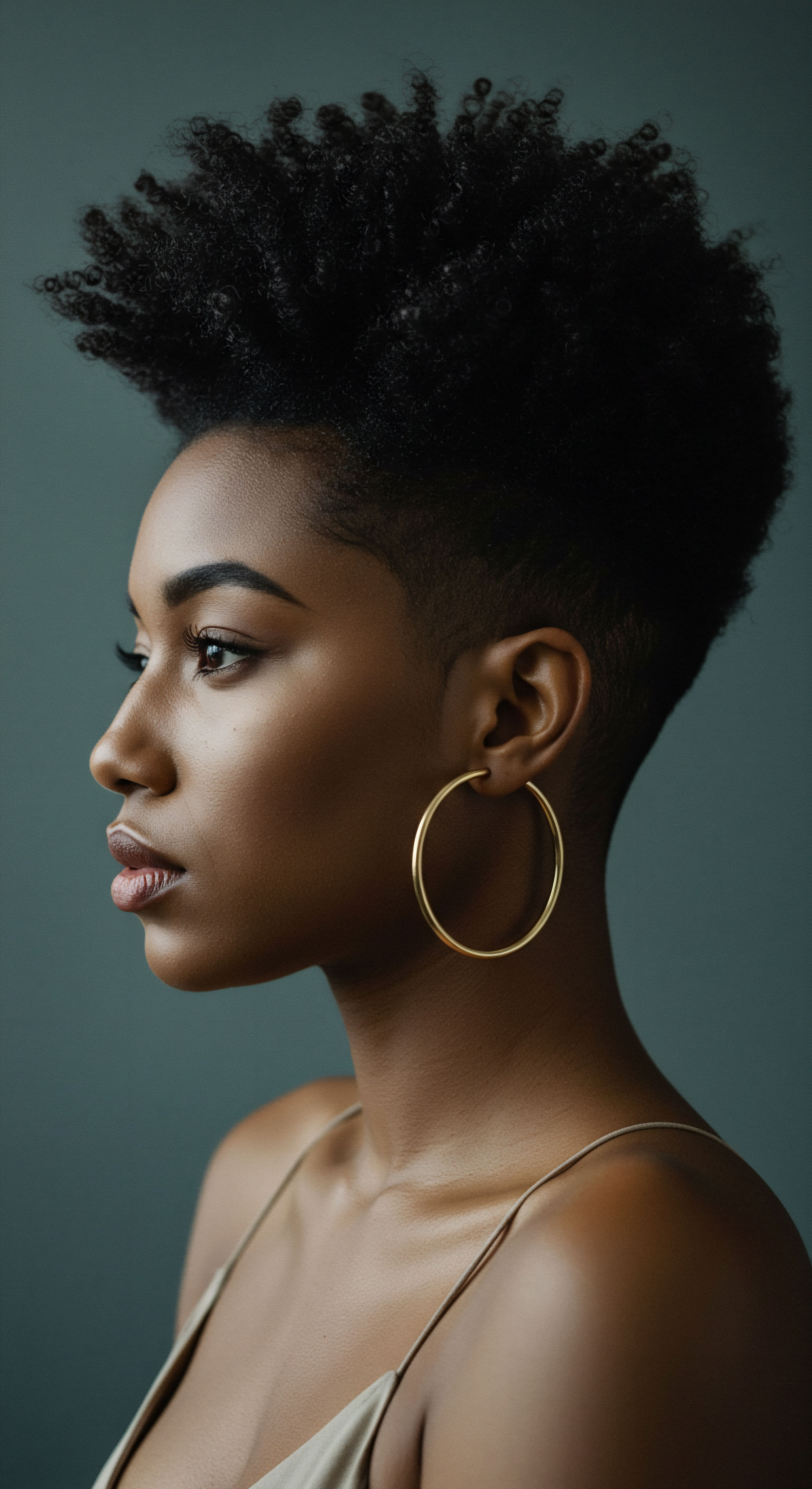
Did Hair Symbolize Resistance for Ancient Women?
Hair, while often a tool of conformity, could also become a powerful symbol of resistance for ancient women, challenging societal norms or asserting personal autonomy. In some instances, deliberately unkempt or unconventional hair might have been a subtle act of defiance against rigid beauty standards or oppressive expectations. While direct historical accounts of such acts are scarce, anthropological studies of later periods and traditional societies suggest that control over one’s appearance, including hair, could be a silent yet potent form of non-compliance. For example, women refusing to cover their hair in cultures where it was mandated, or adopting styles associated with marginalized groups, could subtly express dissent.
This type of resistance, often less overt than political rebellion, allowed women to assert a degree of agency within constrained environments, making their hair a personal declaration in a world that often sought to dictate their every move. This quiet defiance underscores how deeply personal practices could carry profound social and political weight.
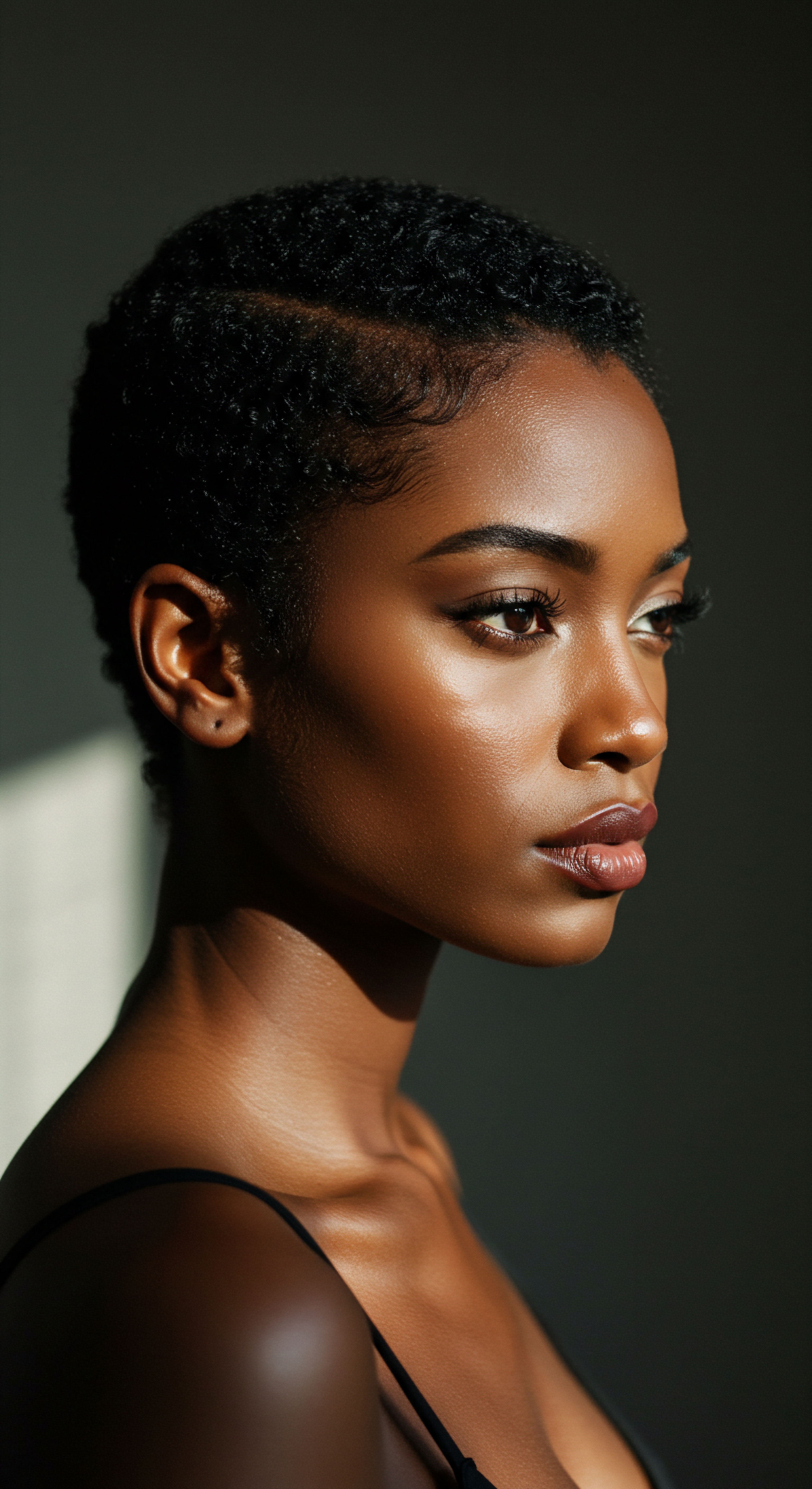
Hair and the Psychology of Perception
The psychological impact of hair practices on women’s self-perception and how they were perceived by others was profound. Hair could instill confidence, reflect a sense of pride, or conversely, be a source of shame or vulnerability. In many ancient societies, a woman’s hair was intimately tied to her honor and reputation.
Public dishonor, for example, might be accompanied by the forced shaving or disheveling of hair, a potent visual punishment that stripped a woman of her social standing and identity. This practice highlights the deep psychological connection between hair and self-worth, where its manipulation could serve as a powerful tool for social control.
Conversely, meticulously styled hair could contribute to a woman’s sense of personal power and social acceptance. The act of adorning oneself, of engaging in these rituals, could be a form of self-care that transcended mere appearance, connecting women to a lineage of feminine practices. This connection to a shared cultural heritage through hair rituals could bolster a woman’s psychological well-being, affirming her place within her community and her connection to her ancestors. The care and attention given to hair, therefore, was not just about outward display but about internal fortitude and a quiet sense of self.
- Identity ❉ Hair served as a core component of personal and group identity, influencing how women saw themselves and were seen by others.
- Power ❉ The ability to control or dictate hair practices often correlated with social or political power, whether individual or collective.
- Vulnerability ❉ The forced alteration or public display of hair could strip women of their honor, highlighting its psychological significance as a marker of dignity.
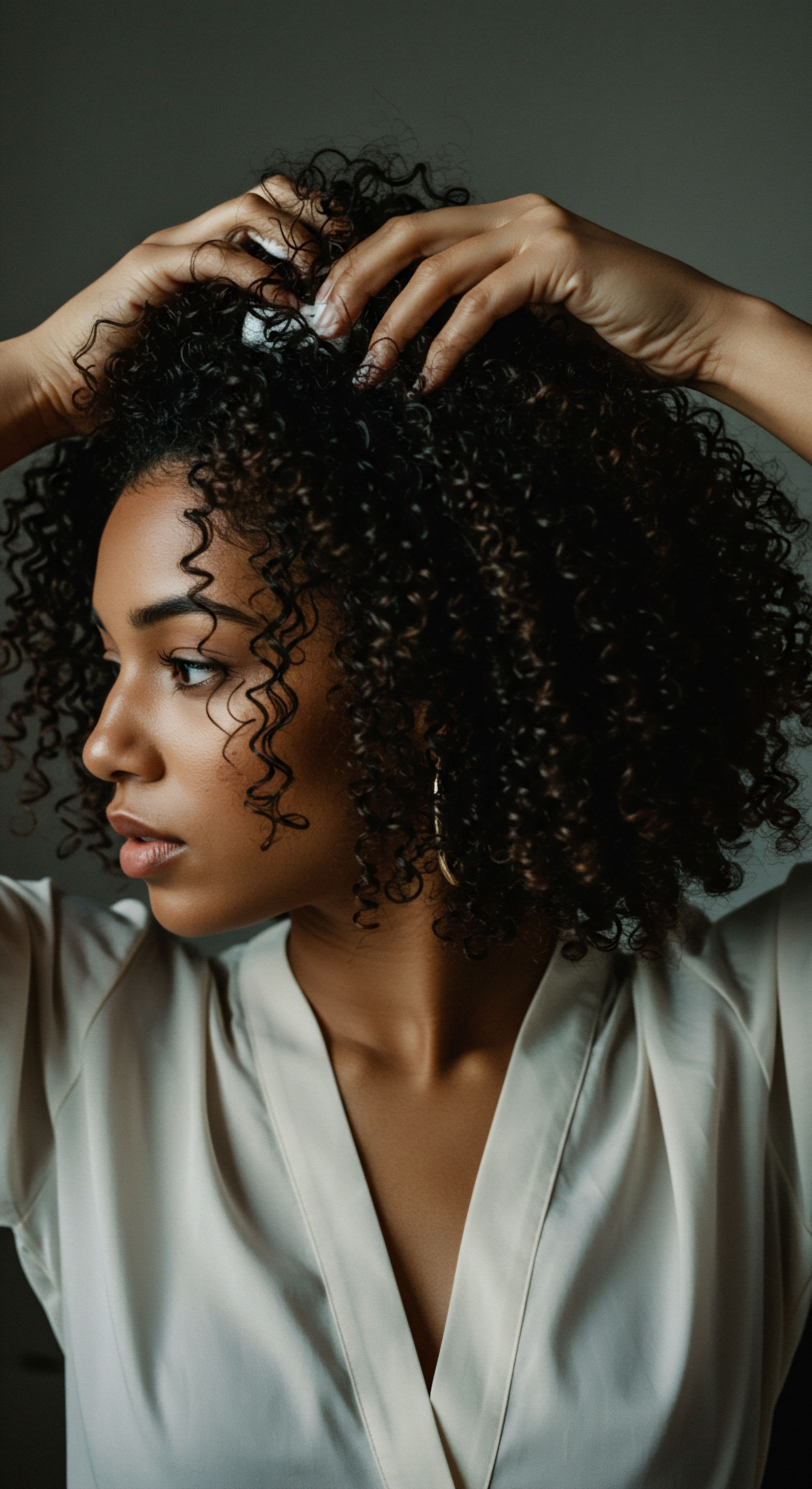
Reflection
The quiet language of ancient hair practices, often dismissed as mere aesthetics, speaks volumes about the intricate ways women navigated their worlds. From declarations of status to silent acts of defiance, from sacred offerings to the subtle weight of economic realities, hair was a living canvas upon which the complexities of feminine existence were painted. It was a testament to creativity, a burden of expectation, a marker of belonging, and sometimes, a quiet plea for agency. As we look upon these historical echoes, we find not just tales of beauty, but profound insights into the enduring spirit of women, their roles shaped and expressed, strand by careful strand.
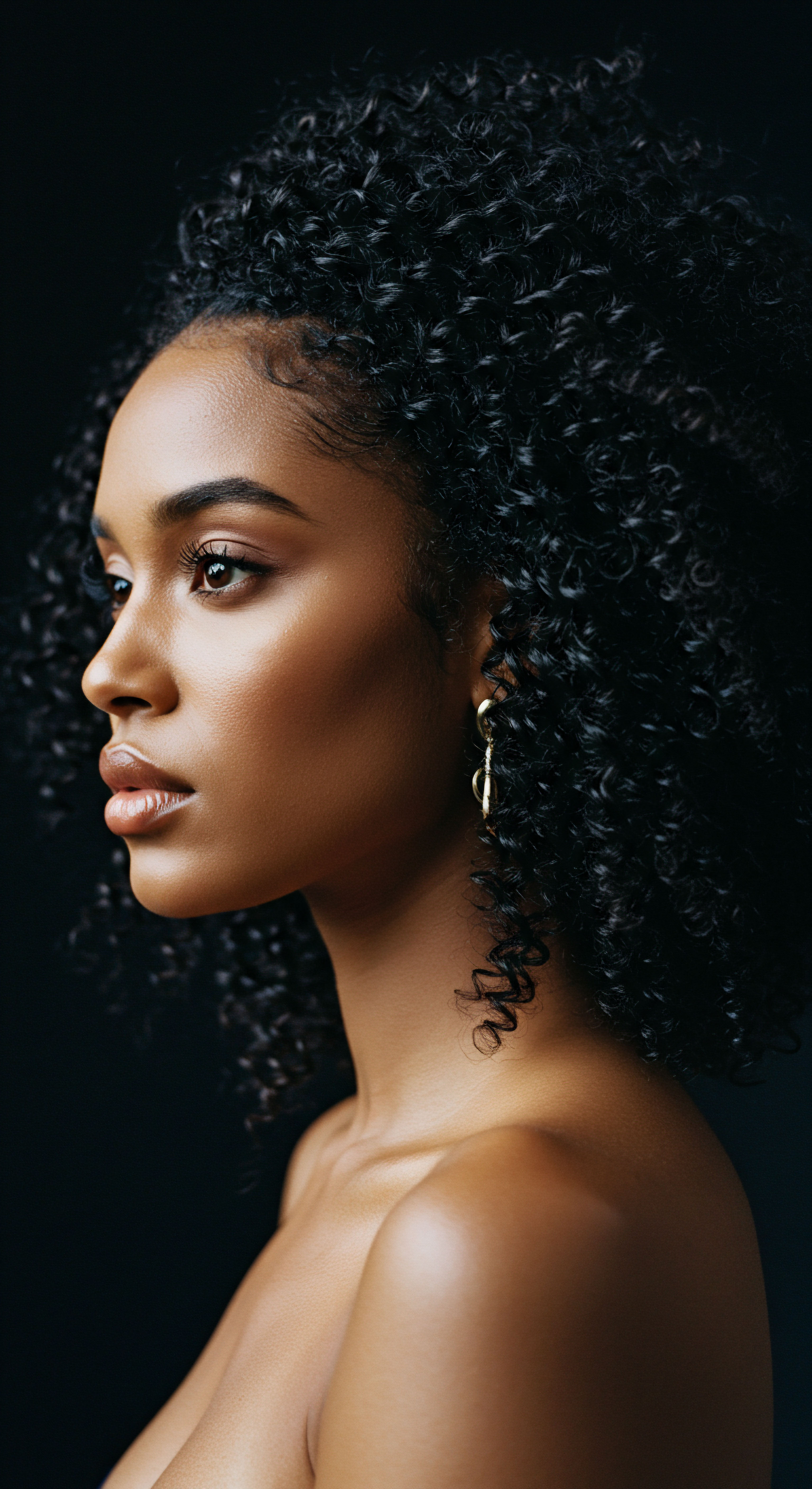
References
- Bartman, Elizabeth. Hair and the Art of Roman Portraiture. Cambridge University Press, 2001.
- Robins, Gay. Women in Ancient Egypt. Harvard University Press, 1993.
- Bynum, Caroline Walker. The Resurrection of the Body in Western Christianity, 200-1336. Columbia University Press, 1995.
- Sherrow, Victoria. Encyclopedia of Hair ❉ A Cultural History. Greenwood Press, 2006.
- Oyelana, T. A. African Traditional Hair Practices and Their Modern-Day Relevance. University of Ibadan Press, 2018.
- Goodman, Jordan. The Hairdo ❉ A Cultural History of Hair. Bloomsbury Publishing, 2021.
- Stewart, Peter. The Social History of Roman Art. Cambridge University Press, 2008.
- Tacitus, Publius Cornelius. The Annals. Translated by Alfred John Church and William Jackson Brodribb. Dover Publications, 2004.